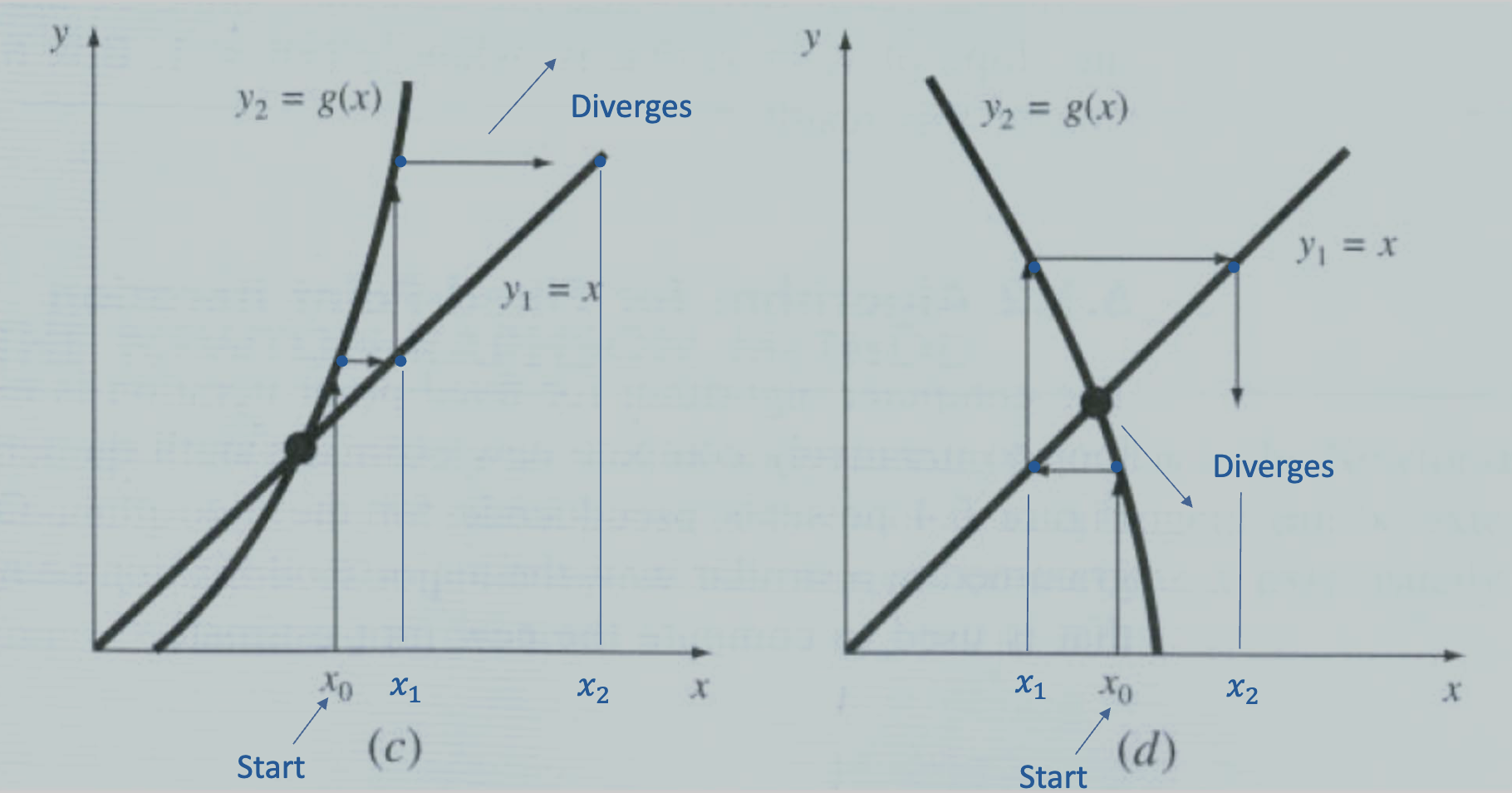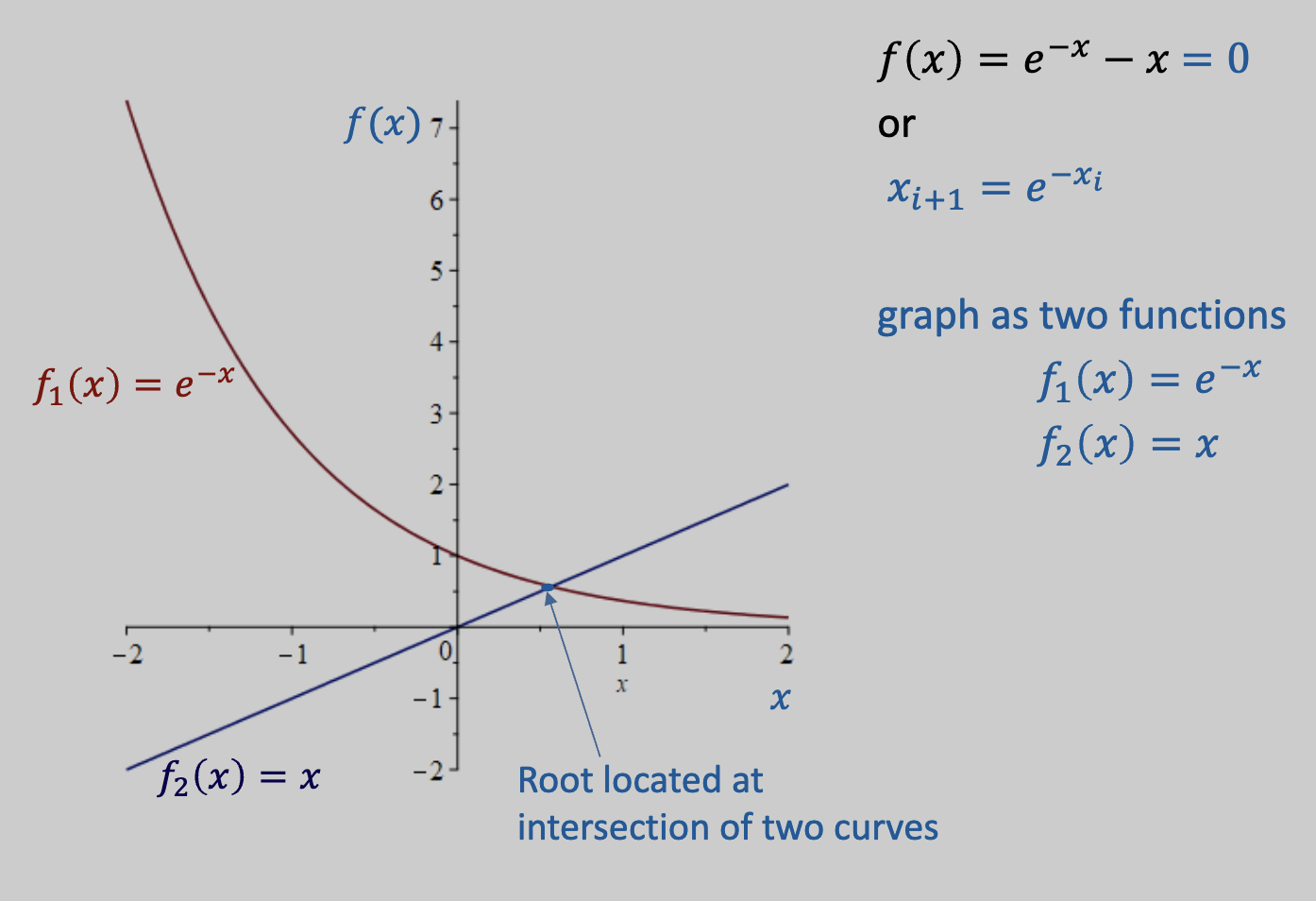Definition
Given an equation , we continuously iterate on to predict the new value of based on its old value.
Transforming Equations
Equations need to be in the right form for fixed point iteration to work. There are 2 options:
- Isolate
- Add to both sides Basically, any needs to be transformed to .
Example 1:
This is transformed by isolating :
Example 2:
This is transformed by adding to both sides:
Fixed Point Iteration Example
Let’s say we have:
Isolating and putting it into fixed point iteration form:
Then, we have:
| Iteration | |||
|---|---|---|---|
| 1 | 0 (initial) | 1 | 100 |
| 2 | 1 | 0.3679 | 172 |
| 3 | 0.3679 | 0.6922 | 47 |
| …10 | 0.5711 | 0.5649 | 1.11 |
Converges when (slope at ).
Convergence Properties
2-curve Graphical Interpretation
Since we are isolating for open methods (see here on transforming equations for fixed point iteration), these functions can be thought of as two curves. Using the function used above as an example, we would have:
Convergence occurs when the absolute value of the slope is less than the slope of . Basically the idea here is that if the curve changes to fast relative to the isolated function, the two curves diverge since the iterations are no longer moving toward the line.
Convergence cases:

Divergence cases:

- Converges when
- Diverges when
